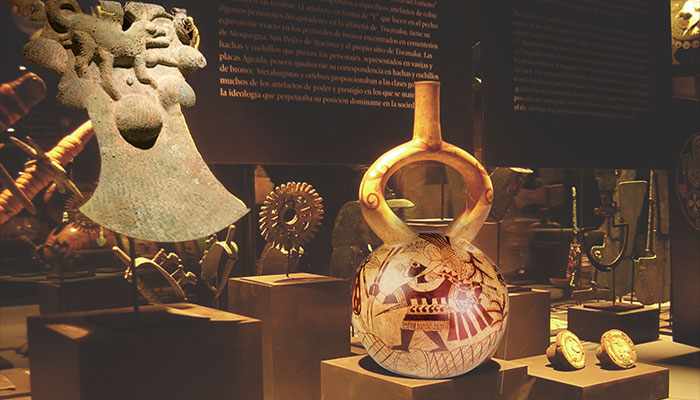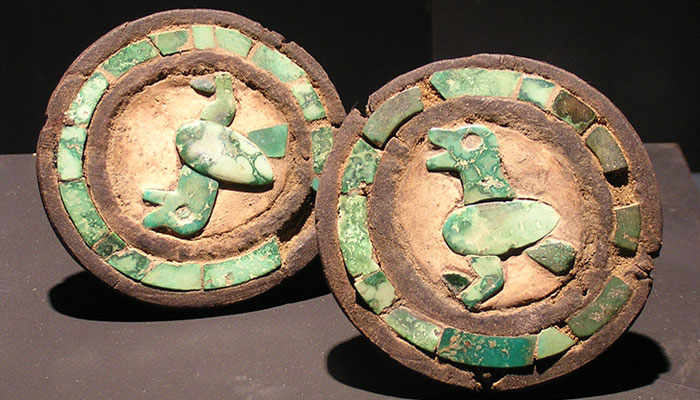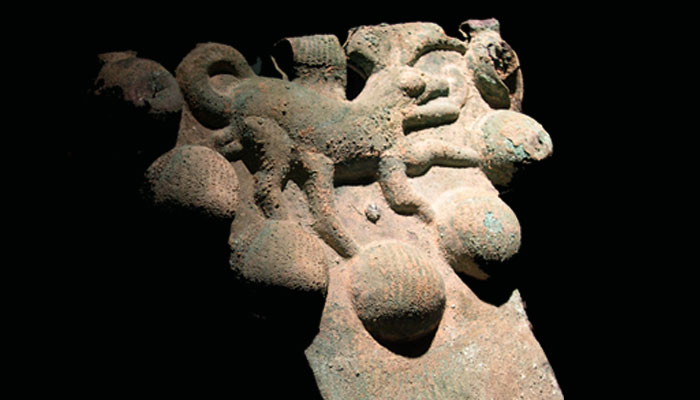The Art of Copper in the Andean World – 2004
- From stone to jewel
- Metal tools
- Chromatic palette of copper
- Metallic sounds and glitters
- Bronze bells
- Metals for taking away life
- Copper on the shaman’s altar
- Copper in the andean iconography
- Metallic bodies
- The face of death
- Food for men
- Food for the gods
- The power of the cailles
- Epilogue
- Galería de fotos
Copper in the andean iconography
One of the most characteristic features of pre-Columbian art in the Andes is that it often depicts real life objects. Hundreds of artifacts that appear on Moche (Perú), Tiwanaku (Bolivia) or Aguada (Argentina) ceramics and textiles are found in the cemeteries as part of burial offerings for the socially prominent deceased. This relationship between objects represented in art and concrete objects also extends also to the metal artifacts.
The half moon headdress of certain mythical individuals drawn on Moche pottery or the molded mask of the deceased in the Burial Theme on this culture’s pottery refer to specific copper artifacts found in the tombs. The “T” shaped artifact that appears on the chest of some decapitated individuals on Tiwanaku pottery, has its exact equivalent in the bronze breastplates found in cemeteries at Moquegua, San Pedro de Atacama and the Tiwanaku site itself. The axes and knives held by the individuals portrayed on Aguada vessels and plaques have their equals in bronze axes and knives. Metallurgists, goldsmiths and silversmiths provided the governing classes with many powerful and prestigious objects, which were the material manifestations of the ideology that perpetuated their dominant place in society.






































